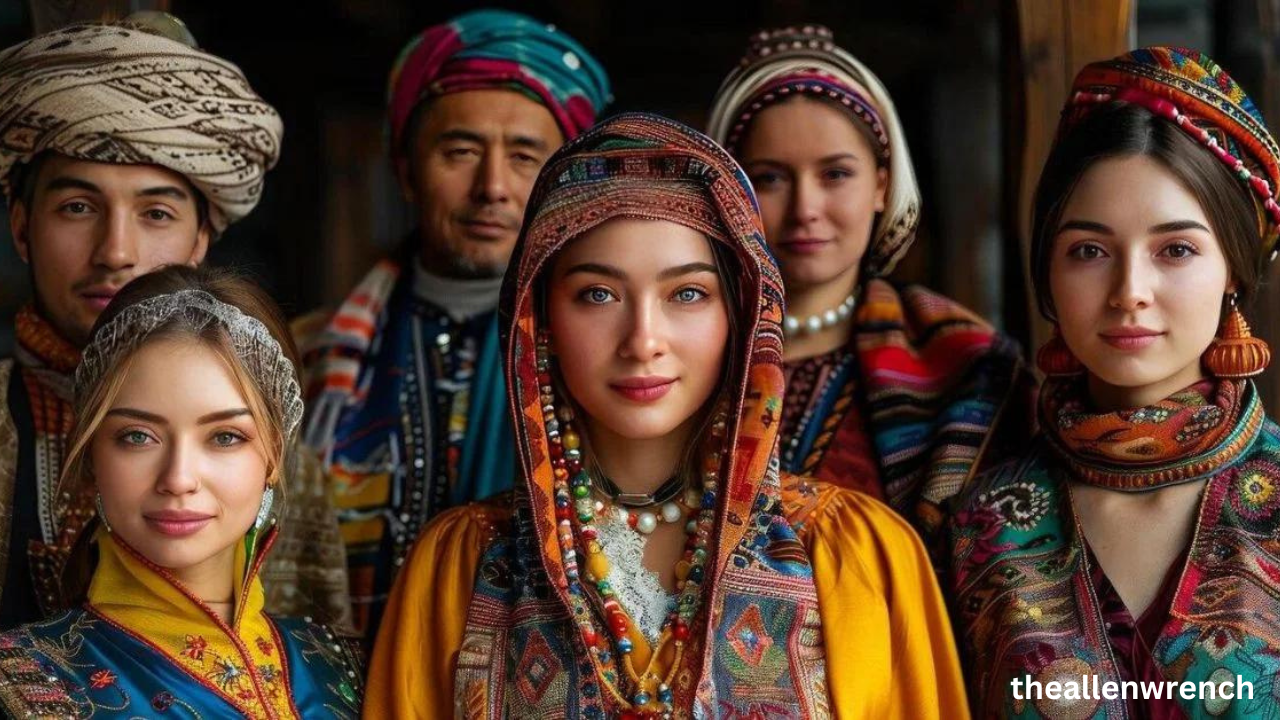Introduction
North Africa is home to a rich blend of cultures and historical legacies, but none are as captivating as the story of the Amaziğ people. Often referred to as Berbers, the Amaziğ are an indigenous group whose heritage spans thousands of years. Their vibrant traditions, language, and resilient spirit make them an essential part of North Africa’s cultural fabric. In this article, we will delve into the Amaziğ culture, exploring their history, daily life, artistic contributions, and the modern-day challenges they face. By understanding the amaziğ, we not only uncover their deep-rooted presence in North Africa but also celebrate their enduring influence on the region.
The Origins and History of the Amaziğ People
The history of the Amaziğ people is one of ancient roots and cultural endurance. Known to have lived in North Africa for millennia, they are believed to be among the region’s earliest settlers. Archaeological findings and linguistic research suggest that the amaziğ have been connected to North Africa since ancient times, shaping the land’s history long before the arrival of other civilizations.
The Amaziğ languages, which are part of the Afro-Asiatic language family, offer a linguistic bridge to their historical ties. These languages reflect their identity and their intrinsic connection to North Africa. Despite the influences of empires like the Romans, Arabs, and others, the amaziğ have maintained their unique customs and ways of life. Through centuries of change, their culture has continued to thrive, surviving in harsh environments such as desert landscapes and mountainous regions. Today, the amaziğ people proudly celebrate their heritage, honoring their ancestors through art, music, and storytelling.
Amaziğ Cultural Traditions
Art and Craftsmanship
Amaziğ culture is renowned for its intricate artistry and craftsmanship. From vibrant woven textiles to beautifully crafted pottery and silver jewelry, amaziğ artisans have a rich tradition of creating works that are not only visually stunning but also deeply symbolic. Many of these art forms carry significant cultural meaning, often depicting stories of amaziğ history, family, and tradition. Geometric patterns and bold colors are common in their works, reflecting the creativity and skill of these indigenous people.
Music and Dance
Music plays a central role in amaziğ culture, showcasing the diversity of their regions. Traditional instruments like the guembri (a three-stringed lute) and the bendir (a frame drum) are frequently used in their musical expressions. Amaziğ festivals often feature lively dances and communal celebrations, symbolizing unity, agricultural harvests, and other important events. These gatherings offer the community a chance to celebrate their culture and pass down traditions to future generations.
Festivals and Celebrations
The amaziğ people have a deep connection to the cycles of nature, reflected in their calendar filled with significant festivals. One of the most important celebrations is Yennayer, the Amaziğ New Year, observed on January 12th. This festival brings together music, feasting, and rituals, celebrating the ancestors and reinforcing the amaziğ’s bond with the natural world. These festivities not only keep ancient traditions alive but also foster a strong sense of community and pride in amaziğ heritage.
Amaziğ Language and Literature
Language is one of the most crucial aspects of Amaziğ identity. The Tamazight language, with its various dialects like Tarifit, Tashelhit, and Kabyle, serves as a vital connection to the past. While the dominance of Arabic and French in North Africa has threatened the survival of these languages, the amaziğ people have remained committed to preserving their linguistic heritage. Grassroots efforts to teach Tamazight in schools and promote its use in everyday life are growing.
Amaziğ literature, particularly in its oral traditions, has long been a means of preserving history and cultural values. Through poems, folktales, and stories, the amaziğ people have shared their experiences and conveyed the themes of freedom, resistance, and nature. In recent years, there has been a renewed interest in amaziğ written literature, with authors and poets working to ensure that this cultural expression continues to thrive.
Contemporary Challenges and Preservation of Amaziğ Culture
Today, the amaziğ face numerous challenges, particularly in maintaining their cultural identity in the face of globalization. Urbanization and the migration of young people to cities for work have led to the depopulation of rural areas, where many traditional practices were rooted. This shift endangers the continuation of certain amaziğ customs, arts, and even the language itself.
The erosion of amaziğ culture is a serious concern, but there are ongoing efforts to counter this. Grassroots movements and local organizations are taking action to preserve and promote amaziğ traditions through education and community activities. Festivals that celebrate amaziğ heritage, such as those that highlight art, music, and traditional practices, are helping to keep the culture alive among the younger generation.
Government collaboration and support for initiatives that protect amaziğ culture are also essential. In addition, ecotourism offers a potential solution by allowing the amaziğ to benefit economically from the preservation of their natural and cultural landscapes. Partnerships with international organizations can amplify these efforts, ensuring that the amaziğ continue to thrive and adapt to modern pressures without losing their identity.
Architecture and Art of the Amaziğ People
Amaziğ architecture is celebrated for its earth-toned, fortress-like designs, crafted to endure the demanding desert environment. From the iconic ksars (fortified villages) scattered across southern Morocco to the hillside homes of Kabylia, Amaziğ architecture showcases the ingenuity and adaptability of this ancient culture. These structures not only serve practical purposes but also symbolize the enduring relationship between the Amaziğ people and their natural surroundings.
In addition to their architectural prowess, art plays a pivotal role in Amaziğ culture. Traditional crafts such as weaving, pottery, and jewelry-making are deeply embedded in their way of life. The intricate patterns found in Amaziğ textiles and pottery often convey symbolic meanings—representing elements of nature, spiritual beliefs, and even historical narratives. The craftsmanship of Amaziğ silver jewelry, embellished with colorful stones, is a hallmark of their artistic heritage, reflecting the skill and creativity that has been passed down through generations.
Must-Visit Destinations to Experience Amaziğ Culture
To truly immerse yourself in the richness of Amaziğ culture, certain destinations stand out as essential stops. In Morocco’s High Atlas Mountains, the village of Imlil offers a captivating introduction to traditional Amaziğ life. This picturesque village, nestled among towering peaks, is a living example of the Amaziğ connection to nature and community.
Marrakech, another must-visit destination, pulsates with vibrant souks and historical landmarks where you can witness Amaziğ artistry firsthand. The bustling markets are brimming with handmade rugs, pottery, and other crafts produced by skilled Amaziğ artisans, making it a cultural hub for anyone interested in their art.
Heading south, the coastal town of Essaouira combines natural beauty with a rich Amaziğ heritage. As a UNESCO World Heritage site, it features stunning architecture influenced by traditional Amaziğ design, offering visitors a glimpse into the historical evolution of their building techniques.
In Tunisia, the Matmata region is home to an extraordinary troglodyte community that mirrors ancient Amaziğ traditions. These unique underground homes, carved into the earth, remain a testament to the resilience and adaptability of the Amaziğ people in harsh desert conditions. Each of these destinations tells a distinct story about the Amaziğ culture and its unbroken connection to its historical roots.
Contemporary Challenges Facing the Amaziğ People
Political and Social Challenges
Despite their rich cultural heritage, the Amaziğ people continue to face significant political and social challenges. Many feel marginalized in their native countries, often lacking adequate representation and recognition in national policies. In nations such as Morocco and Algeria, the Amaziğ population has rallied in recent years, with movements dedicated to advocating for cultural rights, language preservation, and greater political representation. These grassroots efforts underscore the ongoing struggle for equality and recognition within modern state systems.
Preserving Amaziğ Culture in a Globalized World
With the rise of globalization and urbanization, the preservation of Amaziğ culture has become increasingly vital. Initiatives to revitalize the Amaziğ language, Tamazight, and maintain their rich traditions are gaining traction. Educational programs that teach the younger generation the Tamazight language, along with cultural festivals celebrating Amaziğ heritage, are some of the efforts currently underway. These initiatives are critical to ensuring that the unique identity and traditions of the Amaziğ continue to thrive in an ever-changing world.
FAQs
What is the significance of the Amaziğ language?
The Amaziğ language, also known as Tamazight, plays a central role in preserving the cultural identity of the Amaziğ people. It is comprised of several dialects and is crucial for keeping the culture alive across North Africa.
How are Amaziğ traditions different from other North African cultures?
Amaziğ traditions are distinct in their vibrant clothing, unique customs, and rich culinary practices. Their art and architecture also set them apart, highlighting a culture that has maintained its uniqueness despite external influences.
What efforts are being made to preserve Amaziğ culture?
To preserve the Amaziğ culture, numerous initiatives have been launched, including promoting the Tamazight language in schools, organizing cultural festivals, and supporting organizations focused on safeguarding the Amaziğ heritage.
What makes Amaziğ architecture so unique?
Amaziğ architecture is notable for its earth-toned, desert-resilient designs. These structures, often made from locally sourced materials, reflect the Amaziğ people’s deep connection to their environment and their creative response to the challenges posed by their surroundings.
Why is Amaziğ art important?
Amaziğ art, particularly their textiles, pottery, and jewelry, holds deep symbolic meanings. These artistic expressions are not only visually striking but also serve as a way for the Amaziğ people to preserve and communicate their cultural values and spiritual beliefs.
Conclusion
The Amaziğ people represent a resilient and vibrant cultural group in North Africa, whose rich traditions, art, and architecture have endured for centuries. Despite the challenges they face in the modern world, the efforts to preserve and celebrate Amaziğ heritage continue to grow. From political activism to cultural festivals, the Amaziğ people are actively working to ensure their unique identity remains alive for future generations. As globalization increases, it is more important than ever to recognize and support the preservation of this rich cultural heritage, ensuring that the Amaziğ legacy continues to inspire and thrive.
You can see latest update on: Allen wrench



